1850-1851 London, England Revival
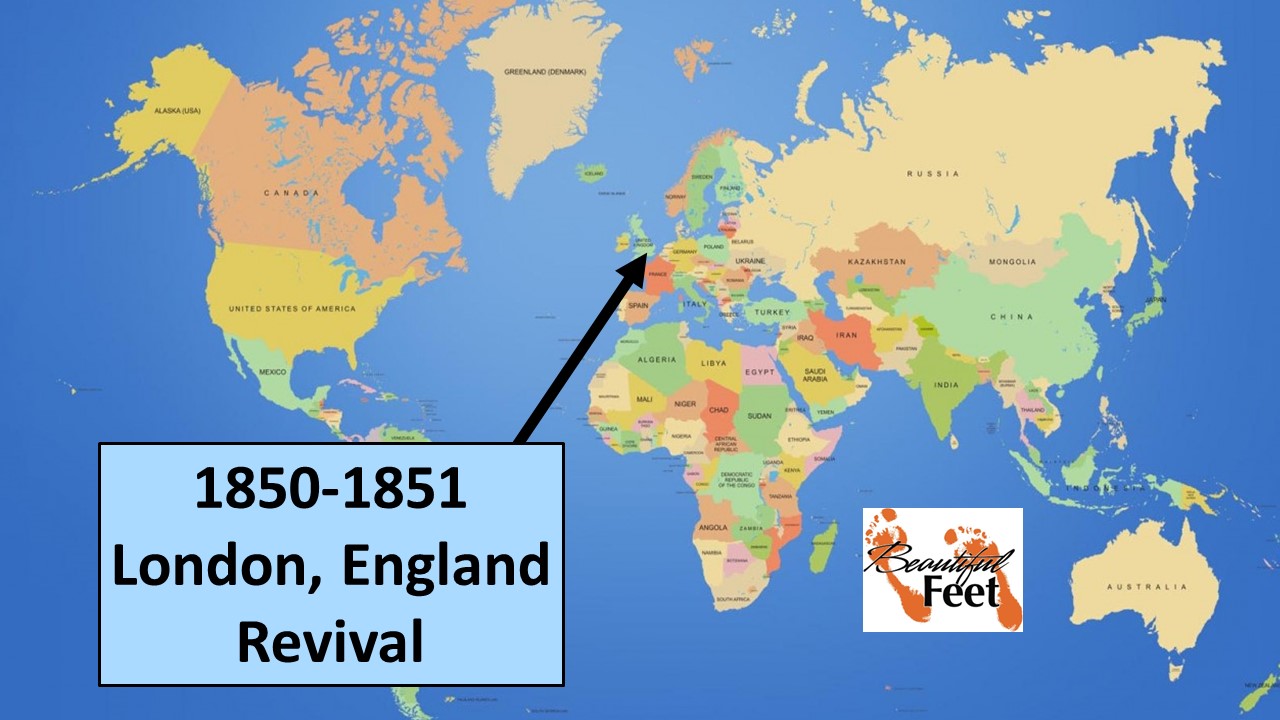

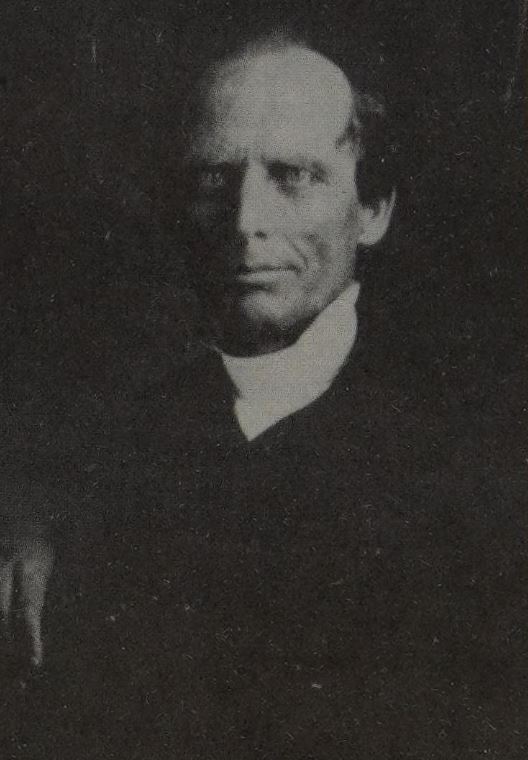
Charles Grandison Finney – Father of modern revivalism and the leading figure of the Second Great Awakening
Introduction
Charles G. Finney’s (1792-1875) unique methods of evangelism earned him the title of the “father of modern revivalism.” His methods paved the way for other mass-evangelists, like Dwight L. Moody, R. A. Torrey, John W. Chapman, Billy Sunday, and Billy Graham, who adapted and built upon Finney’s methods.
Background Information
With this revival account being one in a sequence of revivals during the life of Charles G. Finney, we recommend reading them in chronological order:
► 1824 Evans Mills German Settlement Revival
► 1824 Antwerp, New York Revival
► 1824 Revival at Perch River and Other Locations
► 1825 Revival in Gouverneur, New York
► 1825 Revival in De Kalb, New York
► 1825 Revival in Western, New York
► 1825 Revival in Rome, New York
► 1826 Revival in Utica, New York
► 1826 Revival in Auburn, New York
► 1826-1827 Revival in Troy, New York
► 1827 New Lebanon & Stephentown Revivals
► 1827-1829 Revival at Wilmington and Philadelphia
► 1829 Reading, Pennsylvania Revival
► 1829 Lancaster, Pennsylvania Revival
► 1829 Columbia, New York Revival
► 1830 New York City Revival
► 1830-1831 Rochester, New York Revival
► 1831 Revivals in Auburn, Buffalo, Providence & Boston
► 1832 New York City Revival
► 1835-1840 Revivals in Oberlin, Ohio
► 1841-1842 Boston & Providence Revivals
► 1842 Rochester Revival
► 1842-1843 Revivals in Oberlin, New York, and Boston
► 1849 Revivals in Houghton, Birmingham, and Worcester
From Worcester to London, England
Charles Finney had just completed almost 6 months of holding revivals in three other locations in England (1849 Revivals in Houghton, Birmingham, and Worcester). He then departed that final location, Worcester, on May 5, 1850, to commence work with two churches in London, both under the oversight of Dr. John Campbell.
► Whitefield’s Tabernacle, also known as Moorfields Tabernacle, had seating for over 3,000.
► Tottenham Court Chapel, also known as Whitefield’s Chapel, had estimated seating for 3,000-4,000 people.
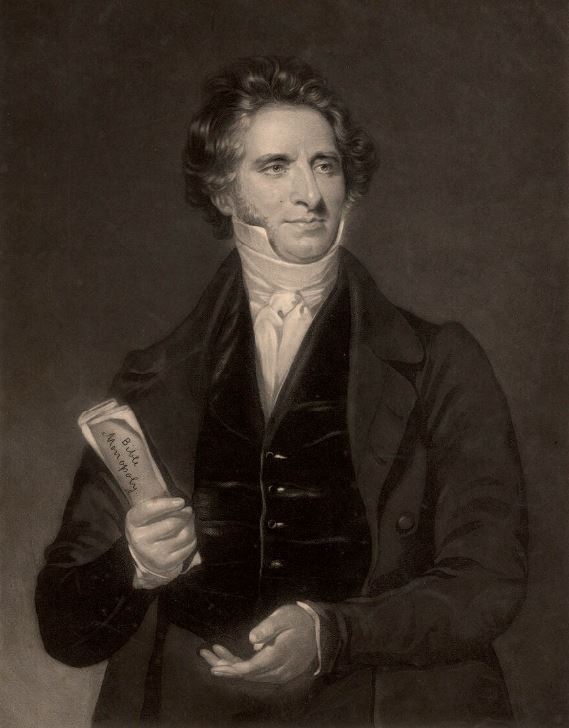
John Campbell: Minister of Whitefield’s Tabernacle and Tottenham Court Chapel. Tottenham Court Chapel was supervised by Campbell’s assistant, Rev. John W. Richardson
On Sunday, May 12, 1850, Finney began preaching at Whitefield’s Tabernacle and he continued in London till preaching his last sermon there on April 2, 1851.
Finney’s Revival Focus
Charles Finney intentionally began stirring up revival in the hearts of the assembled crowds upon his arrival in London, preaching specifically to convict the people of sin as deeply as possible, and according to him:
I saw from Sabbath to Sabbath, and from evening to evening, that the Word was taking great effect. On Sabbath day I preached morning and evening; and I also preached on Tuesday, Wednesday, Thursday, and Friday evenings.
Distributing Flyers to the Community
At the second church, the Tottenham Court Chapel, the congregation was small, so Finney got cards printed for distribution to the homes in the surrounding neighborhood, with the heading:
“Life, Death, Heaven and Hell,” with the place and times of the service noted. Four of us, students and school teachers, distributed them through the surrounding houses. They came to hear.
Crowded Services
Monday evenings were given to prayer, and that weekly prayer commitment produced its intended effect, as the church was filled to capacity on Sunday mornings and nights.
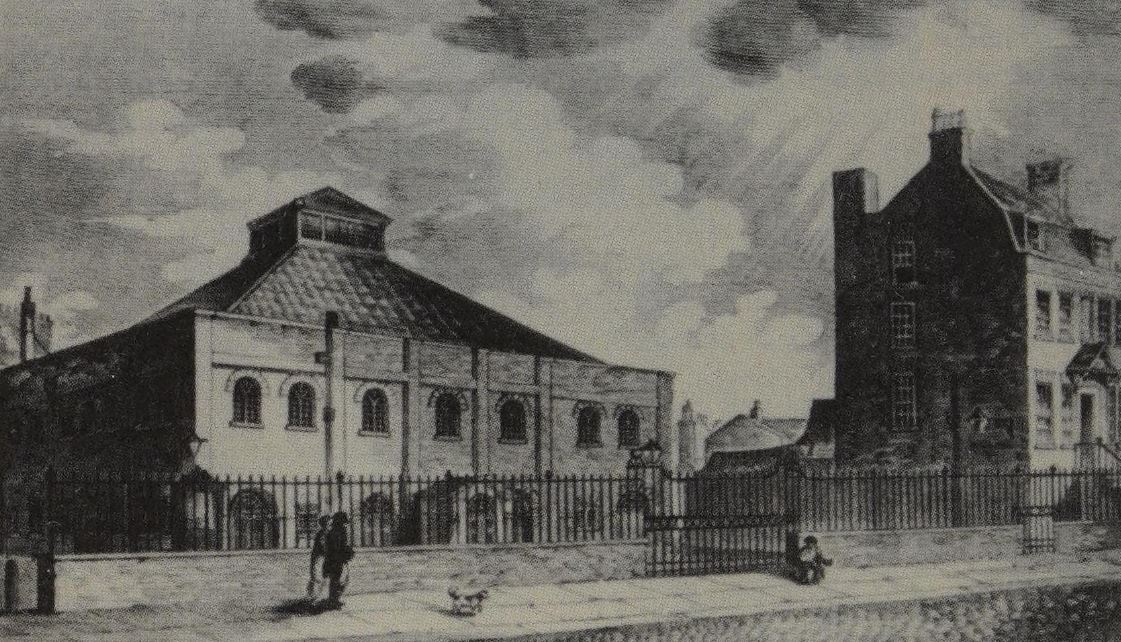
Whitefield’s Tabernacle, London, England
Call for an Inquiry Meeting
After almost one month of preaching, twice on Sundays, and on four other evenings during the week, with a prayer meeting on Mondays, Finney was ready to take the customary step of inviting people to pledge their lives to Jesus Christ. This step was taken through the use of a special meeting, referred to as an inquiry meeting.
During these meetings the minister would lay out what would be required to give one’s life to Jesus, and invite them to kneel down and pray for that conversion to immediately go into effect.
By observing the crowds during his preaching for a few weeks, Finney knew there was a large number that were being convicted of their sins and were ready to convert. When he asked Campbell if a large room could be obtained for conducting this inquiry meeting, Campbell doubted there would be many that would attend, and he suggested a room that would accommodate 20-40 would be sufficient.
Finney pressed Campbell to arrange for a larger room, and though Campbell expressed disbelief, and laughed at the need for a larger room, Finney was able to obtain one that would seat 1,600 people.
Packed Inquiry Meeting
On Sunday evening, June 2, 1850, Campbell was to conduct a closed communion service specifically for the members of the congregation, and it was to follow Finney’s sermon. While the communion service was to take place, Finney was going to hold his inquiry meeting at another location.
At 6 o’clock that evening, Finney preached a short sermon, then, specifically and with clear directions, told those who were concerned for their eternal souls to go to the designated room where they would receive further instruction. He also told them explicitly that this meeting was not for those who were already converted, and that those who were already converted were to remain for the communion service.
Those who had a desire for conversion—about 1,600 of them—then rose from their seats and exited the building, making their way to the designated room. Seeing such a large number respond, Campbell rapidly finished the communion service and joined those at the inquiry meeting.
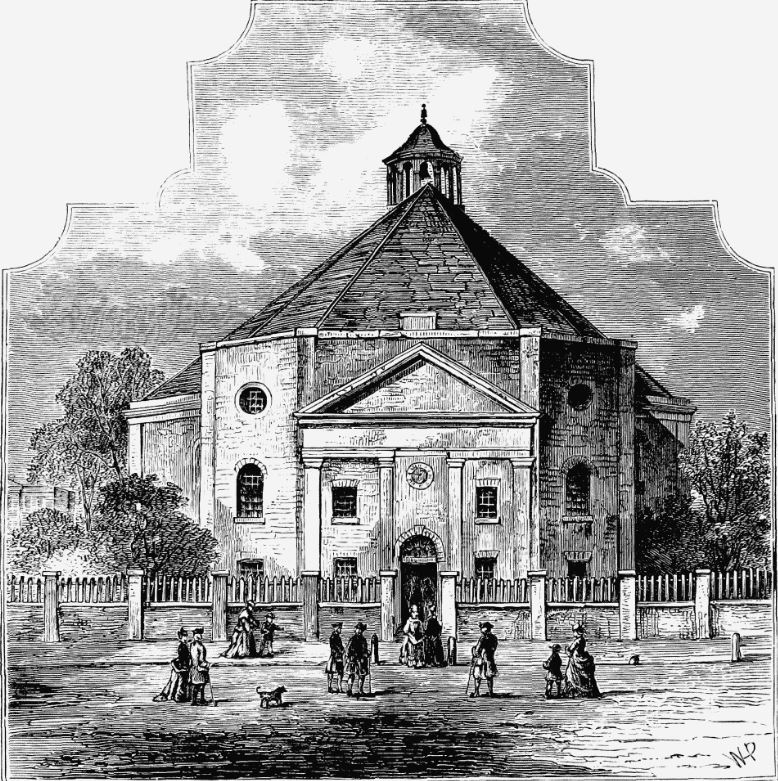
Whitefield’s Chapel, also known as Tottenham Court Road Chapel
Heightened State of Emotions at the Inquiry Meeting
Seeing many people being overwhelmed by the conviction of their sins, and wanting to maintain decorum and not allow for emotions to run unchecked, Finney cautiously presented the Gospel message, and
Called on the people to kneel down; but to keep so quiet, if possible, that they could hear every word of the prayer that I was about to offer. They did by a manifest effort keep so still as to hear what was said, although there was a great sobbing and weeping in every part of the house.
Scene Repeated Itself in Different Ways
The inquiry meetings like what was held on June 2 were repeated often on Sunday evenings, “with similar results,” and that was for the entire 9 months Finney was with that congregation.
As the revival increased, the room that would accommodate 1,600 people became too small. During church services, Finney would then call on people to stand right where they were to surrender their all to Christ.
At times when Finney made the call for people to stand, to indicate they were ready to convert to Christ, “many hundreds would rise,” and on some occasions, “not less than two thousand people have risen when an appeal was made.” Finney took extra efforts prior to asking people to stand, to ensure that those who were already converted were to remain seated.
Widespread Interest
During the weekday services that Finney preached (Tuesdays through Fridays), there would be upwards of three-fourths of those assembled that were not known by the pastor of that church. This led him to say to Finney:
The Assembly was rotatory; you were in effect preaching to portions of a hundred churches.
Attendance Records
With the church building only able to accommodate a little over 3,000, many had to “throng around” outside the building, as they were unable to get inside. This did not include children, as they met at a different location during service times. About these large numbers, Finney commented:
…the interest at that time was so great, that had there been a place of worship that would hold twenty or even forty thousand, I have no doubt but that it would have been just as full as the Tabernacle that held somewhat more than three thousand.
Results of the Revival
► A movement began among the Church of England ministers. They attended Finney’s services and “got greatly stirred up and quickened in their souls.” This led them to the starting of 20 locations for prayer, and not less than 1,500 joining one parish.
► After Finney left London, about 5 different Episcopal churches were holding daily meetings to promote revival.
► Thousands were awakened, converted, and became engaged in Christian work.
► Ten years after Finney left London it was reported that the revival was ongoing, with it still spreading in all directions.
A reporter with the Christian Journal wrote:
We doubt not that thousands will have cause to bless God throughout all eternity, that in his providence he permitted Mr. Finney to visit the Metropolis of England.
A convert during the revival wrote:
In mighty London it must be something very extraordinary to create even a ripple of excitement; but this man [Finney], by the aid of the Spirit, produced a deep and widespread impression. His preaching drew immense crowds…. Thousands were converted as the results of his labors.

Charles Finney and Elizabeth, his second of three wives. His wives accompanied him on his ministry trips. Elizabeth also ministered to various mission organizations and women’s groups.
Departure from England
The Finneys left England on April 7, 1851, and arrived in New York on April 26. After spending several weeks preaching in New York City, and then in Rochester, New York, they arrived back in Oberlin, Ohio, on May 20, only to be faced with a revival that was in progress, with 300 recent converts, and a revival continued through the summer: 1851 Oberlin Revival.
Finney Revival Account List
Access all accounts of Finney’s revivals using this link.
Primary Sources
► Chapter XXX England Revivals: The Memoirs of Charles G. Finney by Charles G. Finney
► The Memoirs of Charles G. Finney: The Complete Restored Text by Charles G. Finney
Secondary Sources
► Charles G. Finney by Wikipedia
► Charles Grandison Finney & the Second Phase of the Second Great Awakening by Christian History Institute
► Great Revivals and the Great Republic by Warren Candler
► Man of Like Passions: The Life Story of Charles Grandison Finney by Richard E. Day
► Memoirs of Revivals of Religion by Charles G. Finney
Return to List of Revival Stories
Chet & Phyllis Swearingen:
Office: (260) 920-8248
romans1015@outlook.com
Beautiful Feet
P.O. Box 915
Auburn, IN 46706

